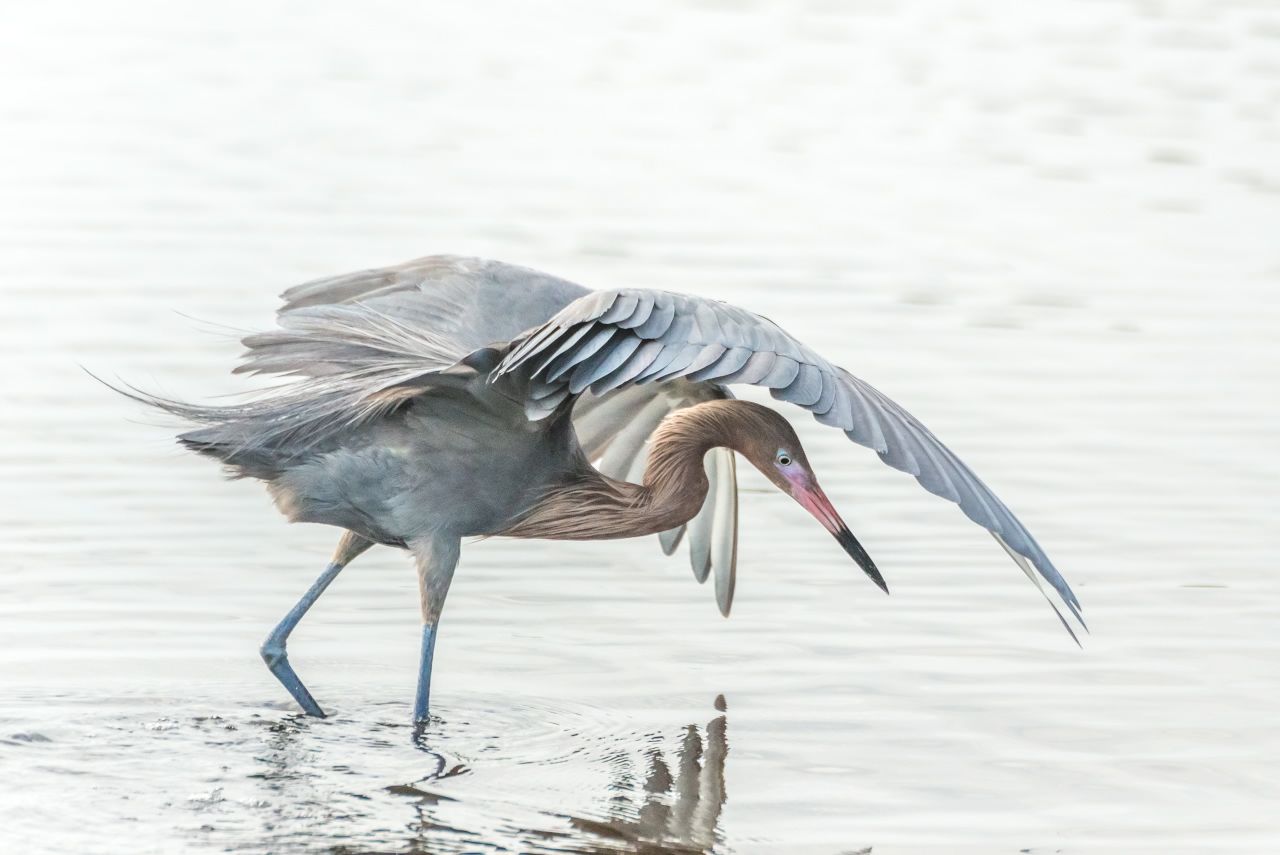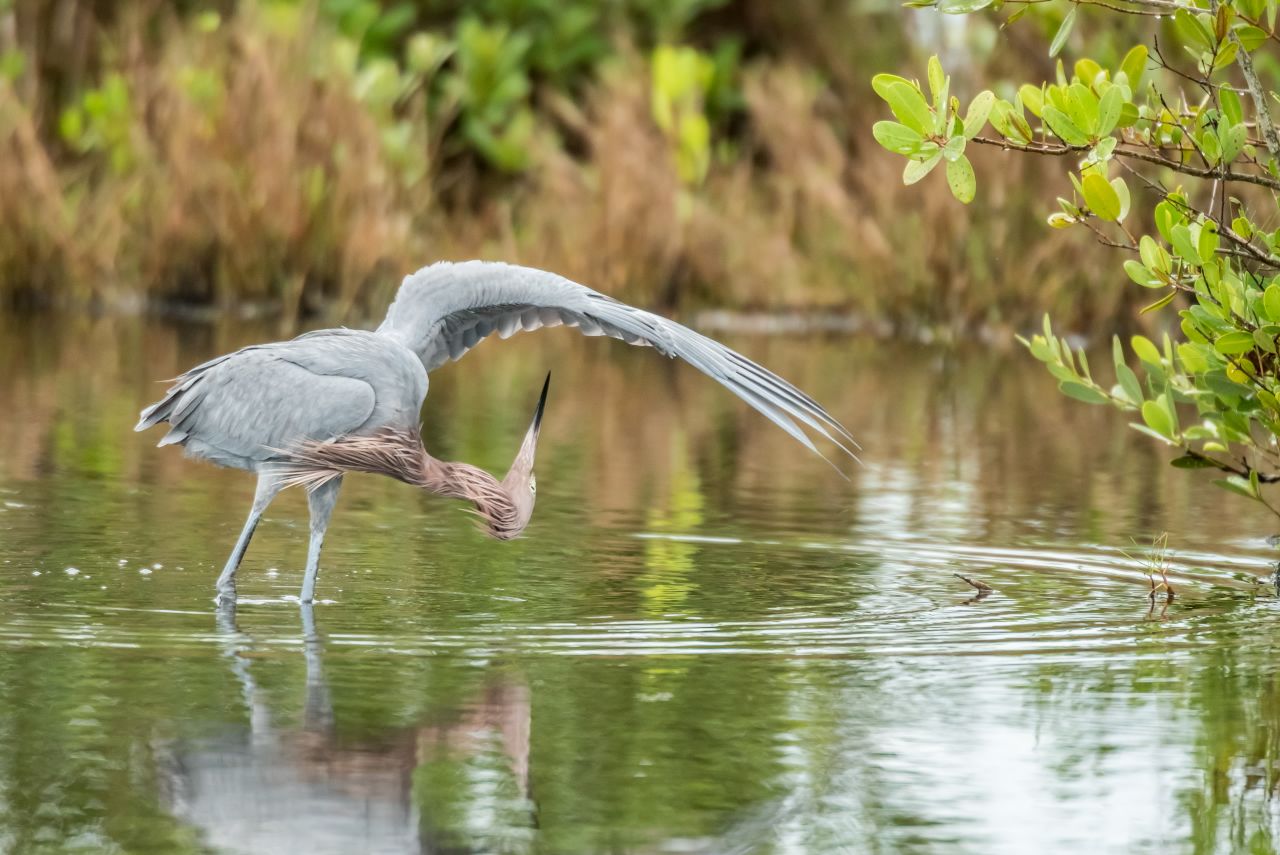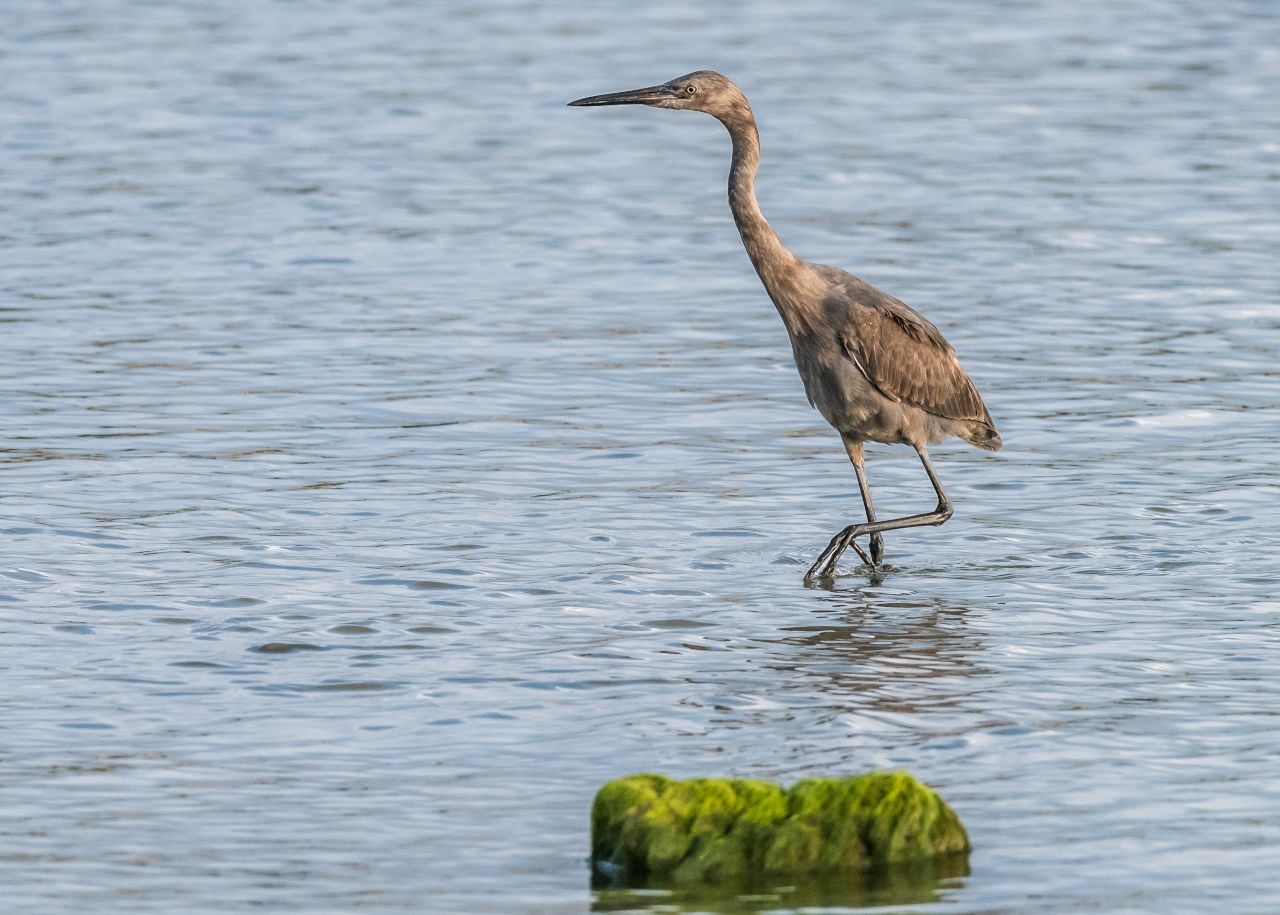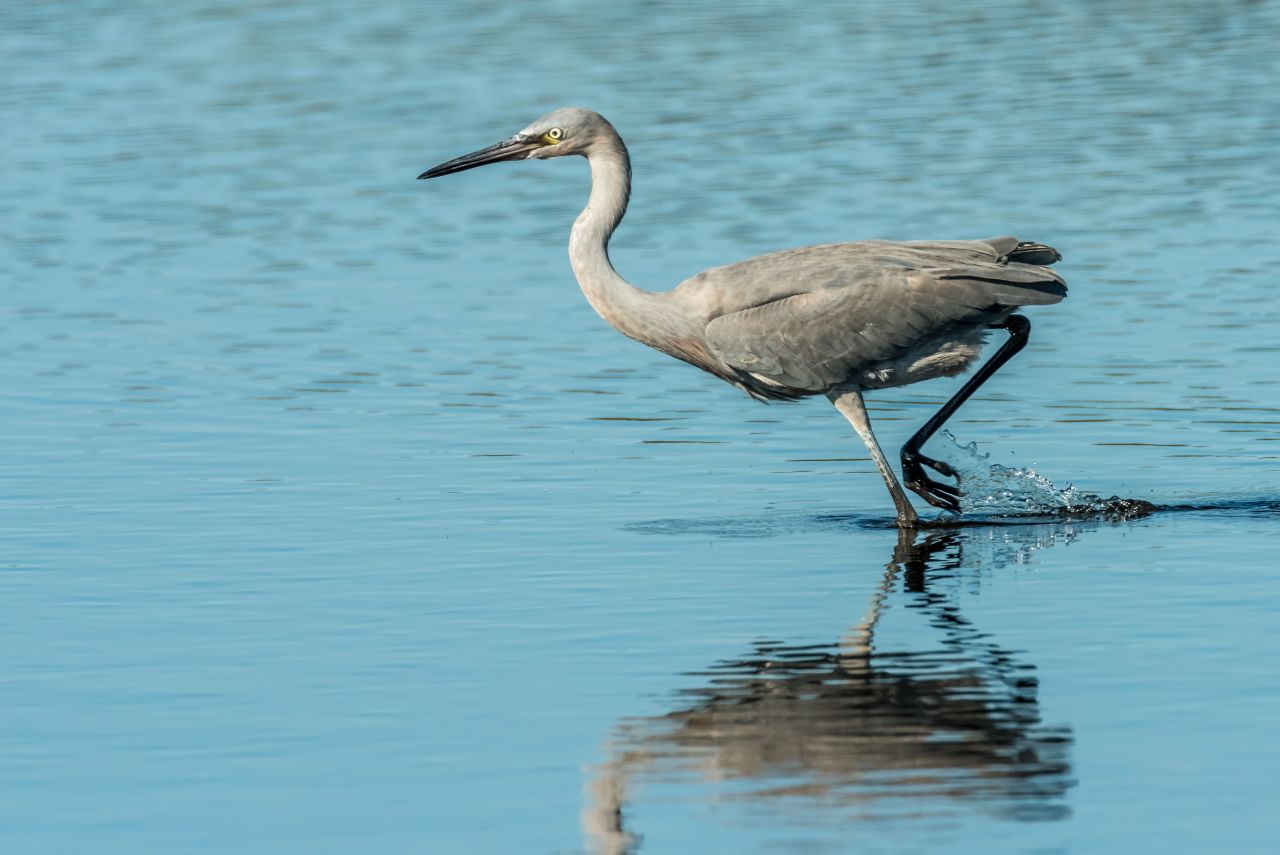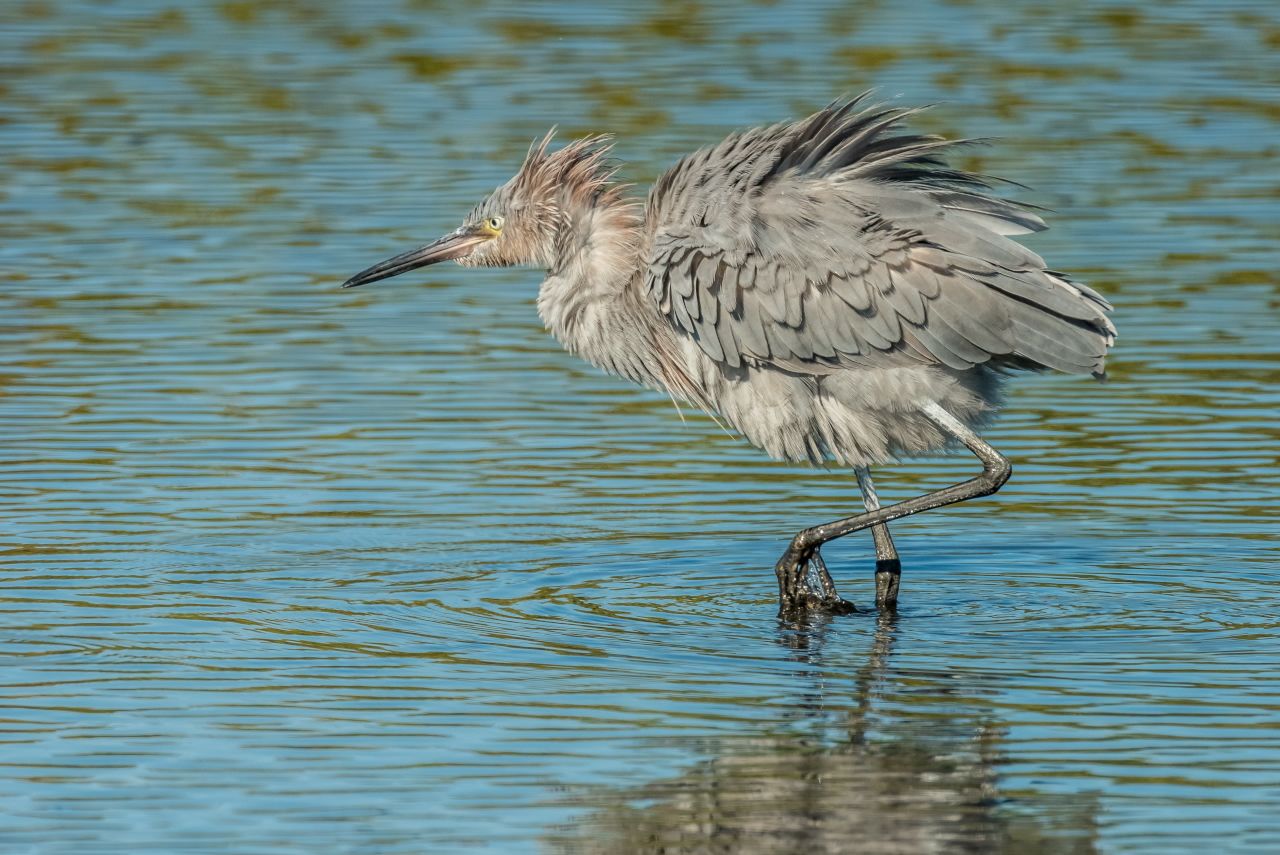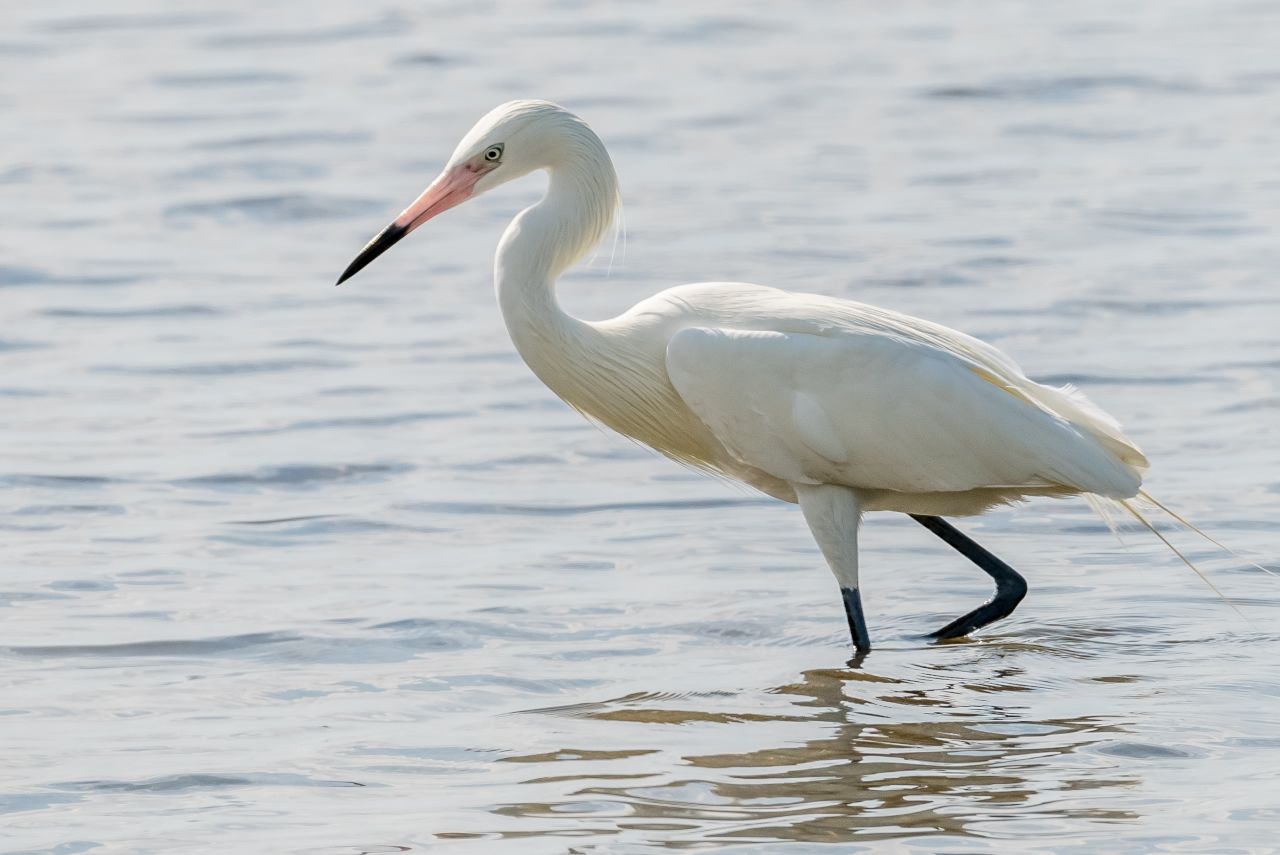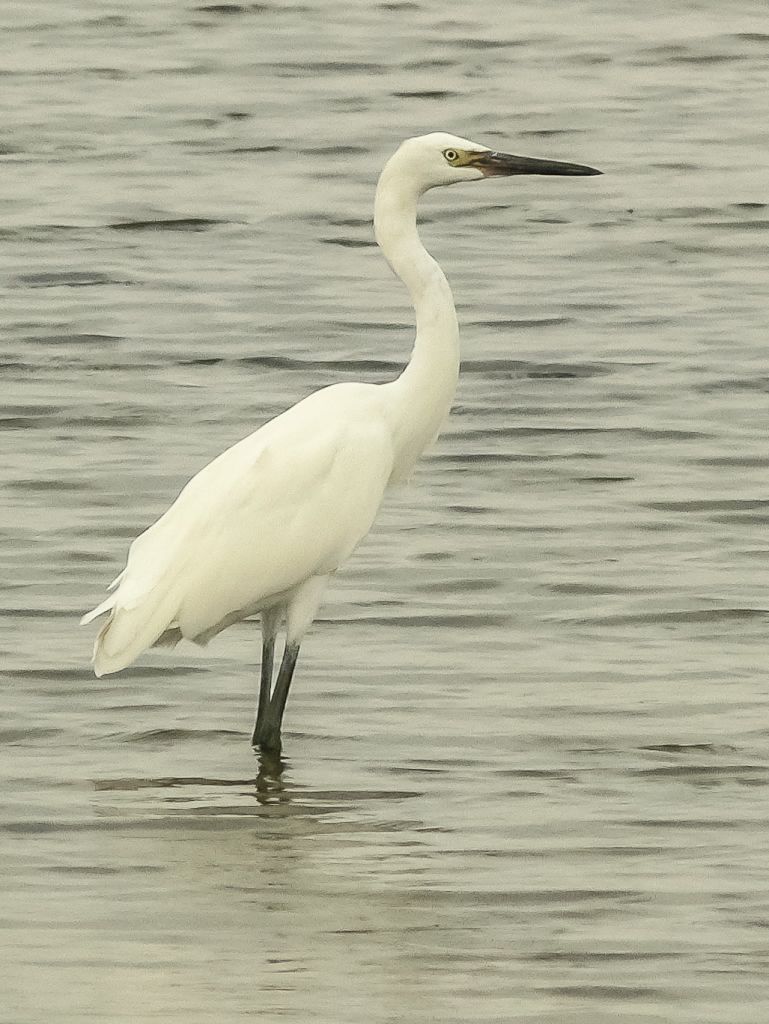“You completely missed Reddish.” A relatively new HartBeat reader who had just acquired a copy of Volume 1 of the HartBeat columns (Volume 2 is currently being edited for publication by my son) was commenting on one of the early columns in the book entitled “Red By Any Other Name.”
He was right: there was red, cardinal, scarlet, crimson, and vermilion, as the column featured the Vermilion Flycatcher. But I had failed to include reddish. Thankfully, he did not mention that I also missed rose, rosy, roseate, ruby, ruddy, rufous and rusty, all presumably additional shades of red. But for now, the focus is on reddish, as in the Reddish Egret, the only bird featuring that descriptive name.
The dictionary defines reddish as “tinged with red.” That is quite appropriate for the Reddish Egret, as the only part of the bird truly tinged with red is the head and neck area. (photo 1) The Reddish Egret differs from other egrets in that it often hunts by chasing fish around in a mad dash, sometimes ending up by spreading its wings in an umbrella fashion creating a large shaded area immediately around its feet. This technique is called canopy feeding, as the shaded area presumably attracts fish in close for easy pickings by the bird. (photo 2, note the blue legs of the breeding plumage in this photo.)
Another quirk seen frequently performed by Reddish Egrets, more than any other egrets, is an examination of the underside of its wings, probably performed to remove certain pesky flies that may bother it. (photo 3)
Very young Reddish Egrets are mostly brown, without any of the subsequent gray body or reddish coloring they will later obtain. (photo 4) Juveniles become all gray, still without the telltale reddish head and neck, and have an all-black bill. (photo 5) As they approach adult plumage, Reddish Egrets begin to develop the reddish neck and head, and the pink part of the bill with the black tip begins to appear. (photo 6)
There is also a white morph form of the Reddish Egret, which is all white but has the same pink bill with the black tip of its reddish namesake. (photo 7) Less than 20 percent of Reddish Egrets are of the all-white version, but that percentage is believed to have been much higher prior to the late 1800’s when the white morph birds were much prized by plume hunters seeking their white feathers for women’s hats.
White Reddish Egrets are white from birth, not needing to go through any color changes as they mature. The only way to distinguish the younger all white birds is by the bill, which like its reddish siblings has an all-black bill until it develops the pink base of the adult plumage. (photo 8) Interestingly, reddish and white siblings can be produced by the same pair of Reddish Egrets and raised in the same nest. Reddish Egrets are confined to the Gulf Coast and southern Florida, nesting as far north as Merritt Island and on spoil islands in the Indian River Lagoon. (photo 4 is from the Indian River at Fort Pierce) There is only one recorded nesting north of Florida, in 2004, in South Carolina.
The Reddish Egret has another, perhaps less significant distinction. It is the only North American bird species using the “ish” description for its name and color. There is no blackish, brownish, bluish, grayish, greenish, purplish, or yellowish named species of bird whatsoever. Another somewhat similar descriptive color name usage for species is the modifier “Snowy” as in Snowy Egret, Owl and Plover.
I suppose snowy means somewhat white, or almost white, or similar to snow, which is usually pretty much white until it comes into contact with people, cars, snow plows or shovels. Then it can become pretty gross. Or “Sooty,” as in Sooty Grouse, Shearwater, or Tern, which is what old, sitting on the ground for some time, snow can begin to look like. Of course, I only recall this from distant memory as I have spent the last twenty winters in sunny Florida where reddish, or greenish in particular, is definitely preferred to snowy every day of the winter.
For more on Reddish Egrets, see: myfwc.com/wildlifehabitats/imperiled/profiles/birds/reddish-egret/ and www.reddishegret.org/REEG_plan_final_single.pdf.




